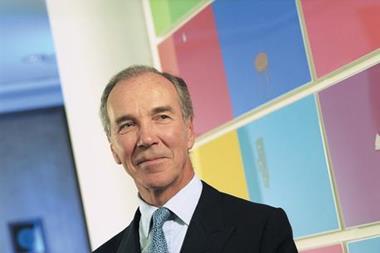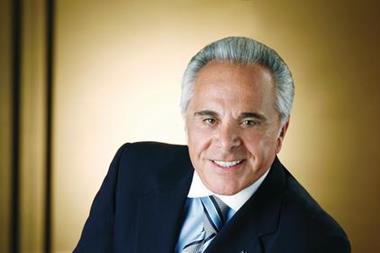How does the insurance industry cope when the pound slides against the value of the dollar? Angelique Ruzicka finds out
Currencies go up and down all the time. It is not generally a cause for concern. But when the pound fell 35% against the dollar in the final months of last year, there was panic in the City of London. The slump prompted Lloyd’s to write to its members last November, warning them to raise more capital before June this year, when they must demonstrate that they meet the market’s “coming into line” rules on regulatory capital.
The Lloyd’s letter warned members that business plans for 2009 had originally calculated the exchange rate at $1.99 to £1, but that at the time of writing the rate stood at $1.50 to £1. It slid further in the new year to a low of $1.35 on 23 January – a drop of 36.2% on the high of $2.11 recorded on 9 November 2007. As Insurance Times went to press, it stood at $1.38.
Lloyd’s admits that it has never been so concerned about currency fluctuations. Luke Savage, the market’s finance director, says members keep capital and reserves in sterling. They will be hit if they conduct business in the USA and if they have to pay claims in dollars. Most of Lloyd’s business falls into this category – hence the need for action, he says. “Sixty per cent of our business gets written in dollars. It was such a big move that it caught our eye.”
Under the “coming into line” rules, Lloyd’s expects members to have a minimum amount of regulatory capital, plus an extra 35% as a buffer in the event of a large-scale catastrophe, such as 9/11. The pound’s fall means the buffer could be eroded, however.
It is the speed of the pound’s plunge that is causing most anxiety. “Under normal circumstances that buffer would be sufficient,” says Savage. “But if you look back over time, the biggest movement was an 8% move over six months. At the end of last year, there was at least a 25% move over less than six months.”
Lloyd’s says the resulting shortfall in capital will differ for each syndicate, depending on results for the second half of 2008, exposure to the dollar and constitution of the funds at Lloyd’s.
Hardy, the underwriter, was one of the first to act after receiving the letter, applying to have its 2009 underwriting capacity for syndicate 382 increased from £185m to £250m. Barbara Merry, Hardy’s chief executive, admits that members have been caught off guard.
“Business planning for the current year was done in June last year. At that time, the weakening of sterling had not been anticipated but now, as exchange rates have changed, volumes have increased so we have subsequently had to increase capacity,” she says.
A number of members have since entered into rights issues to make up any shortfalls. Catlin began a campaign to raise £200m last month; in January Chaucer issued more shares in a bid to raise £75m and Beazley looked to find £150m through its share offering. Hardy, meanwhile, is placing an open offer to raise £40.3m.
Brokers are not immune either. Last month, Willis announced that its fourth-quarter net income fell about 35% to $62m (£43m). It says part of the decline is down to integration costs from the recent acquisition of Hilb Robal & Hobbs (HRH), but the broker admits that it has been hurt by foreign currency fluctuations.
The pound’s slide would not have caused such alarm if it were an isolated incident, say commentators. “A lot of London insurers have dollar-based businesses. If it wasn’t for the fact that we are in the middle of a credit crunch then it wouldn’t have been a problem at all,” says
James Britton, corporate financial director at KBC Peel Hunt.
So far, Lloyd’s believes its members have taken enough steps to ward off any capital erosion that will follow a strengthening of the dollar.
“We have spoken to a number of players and they either have, or are intending to, put in more capital,” says Savage. “An awful lot of Lloyd’s players have excess capital anyway. Generally there is no one we are particularly concerned about.”
Industry commentators tend to agree that Lloyd’s members won’t have problems in raising funds. “If they don’t,” says Britton, “they just won’t write as much business. I don’t think it’s a question of enough or not enough.
“If Hardy had not raised its money, for example, it would have done less business in 2010. Amlin reported this week it already had enough capital and therefore didn’t need to.”
But Ian Clark, insurance partner at Deloitte, says some players have yet to seek more capital. “Most of those rights issues we’ve had have gone down considerably well, and they’ve got the capital in. I would expect more to come.”
Rights issues suit members for other reasons than raising capital. “We are also experiencing a hardening market in rate terms so it’s not just playing the game, but being able to take advantage of all this new business coming along, so they have to top up even further,” says Clark. “Hence the spate of rights issues coming from Lloyd’s vehicles.”
Some companies, meanwhile, have done well out of the currency fluctuations. “Insurers that have costs in dollars will be suffering. Others that have income or receive premiums in dollars will be benefiting,” says Jonathan Quinn, managing director of World First, a foreign exchange broker.
Some companies have benefited from the pound falling against other currencies. QBE found its European operations boosted by the Australian dollar rising against the pound. It posted solid 2008 results compared with its peers, with after-tax profit of A$1.86bn (£837m). Its profit was down just 3.5% from its 2007 result of A$2.17bn as investment losses were offset by foreign exchange gains.
But commentators warn against an over-reliance on currency movements. A spokesman for stockbroker Arden Partners says companies should not underpin their profit arguments just on currency changes.
“People say it’s provided a benefit, but they have to be aware that underwriting has been wiped out by Ike and Gustav – and that reserve releases have been a massive prop to profile line as well,” he says. “Reserve releases and currency are lower quality forms of earnings rather than underwriting profit.”
It is unclear whether the dollar will continue to hold its strong position against the pound. David Lamb, head of treasury services for No1 Currency, points out how sensitive movements are: “One day something adverse is said ... the whole market goes risk averse and then investors buy into the US dollar as a safe haven. When Lehman blew up, there was huge risk aversion in the market. If there is more bad news, it tends to push investors towards the US dollar. AIG’s news has hit markets and that is why the dollar strengthened again by two to three cents against the pound. It shows you how fickle the markets are.”
But Lamb feels confident the pound will bounce back. “We are still in a precarious situation but I am quietly confident that the pound can recover.”
He says it could be worth up to $1.60 soon – even higher by summer.
If the pound were to strengthen dramatically, Savage says Lloyd’s could give capital back to members. “If they came into line in June and then the pound strengthened by 30%, we would look at either giving them the capital back or equally put more capital in if there was another slide. It all depends on the magnitude of the move.”






































No comments yet